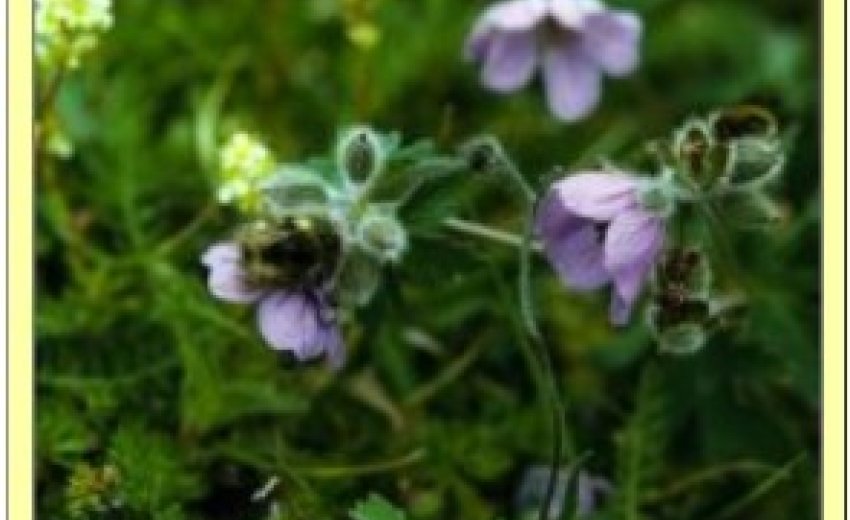Honey Works as Good as Cough Syrup:
Four Beneficial Uses of Honey
©2015 Health Realizations, Inc. Update
Beekeepers have been raising bees to produce honey since at least 700 BC. Back then, this sweet, natural sweetener was a rarity used in religious ceremonies and for medicinal and cosmetic purposes.
 Typically, the only people who could afford honey for
eating were the very wealthy.
Typically, the only people who could afford honey for
eating were the very wealthy.
Nowadays, you can find honey in a variety of colors, flavors and textures (not to mention qualities) in just about every supermarket.
What Exactly IS Honey?
Everyone knows the sticky, sweet honey that kids of all ages love to lick from their fingers. But do you know how it's actually created?
Bees use honey as food, and they make it by collecting nectar from flowers. This nectar mixes with their saliva, which is full of just the right enzymes to create honey. The nectar-saliva mixture is then brought back to their beehive, where their wings fan it into just the right consistency.
The flavor and texture of honey varies depending on the type of flower from which the nectar came.
Honey is More Than Yummy ... It's Healthy
As though you needed another excuse to add some honey to your life, it turns out that honey is good for you in many ways. Honey ...
1. Soothes a Cough Better Than Cough Syrup
 With all of the concerns surrounding over-the-counter cough
and cold medications for kids (the FDA has issued a public
health advisory because they may not be effective, and they
can cause side effects), here's some welcome news.
With all of the concerns surrounding over-the-counter cough
and cold medications for kids (the FDA has issued a public
health advisory because they may not be effective, and they
can cause side effects), here's some welcome news.
A small amount of honey works just as well.
A study by researchers from Penn State College of Medicine involved over 100 children with coughs between the ages of 2 and 18. Before bed, the children were given honey-flavored cough syrup, honey or nothing at all.
Parents of children who received the honey rated their children's sleep and symptoms as better, and noted improvements in their own sleep as well.
The researchers noted that the type of honey may be important. The children in the study were given dark-colored buckwheat honey, and it's known that darker honeys have more antioxidants than lighter honeys.
Note: Pediatricians do not recommend giving honey to children under 1 year of age because of the risk of botulism.
2. Helps Heal Wounds
Honey is anti-bacterial, anti-viral and anti-fungal, and all of these properties make it ideal for healing wounds. It also dries out wounds effectively because of its low water content while its high sugar content keeps microorganisms from growing. Honey also contains an enzyme that produces the disinfectant hydrogen peroxide when it touches a damp surface like a wound.
In fact, it has been used to treat burns, ulcers and other wounds for centuries.
Numerous studies show that honey heals wounds quickly, often better than antibiotics. For instance, a 2003 study in the European Journal of Medical Research found that infected wounds after caesarean sections healed 85 percent of the time with honey, and only 50 percent of the time with conventional treatments.
Earlier this year, the U.S. Food and Drug Administration approved dressings made of Manuka honey (which has a unique antimicrobial ingredient) for wound and burn treatment, making it the first honey-based medical product in the country.
3. Increases Your Antioxidants
Your body needs antioxidants to protect your cells from damaging free radicals. And consuming buckwheat honey daily has been found to raise your blood levels of beneficial antioxidants.
4. May Lower Your Cholesterol
In a study of eight healthy people who were given solutions of sugar, artificial honey or natural honey, the natural honey was beneficial.
Whereas the sugar and artificial honey either caused negative reactions or very small beneficial ones, the natural honey reduced:
- Total cholesterol by 7 percent
- Triglycerides by 2 percent
- C-reactive protein by 7 percent
- Homocysteine (a risk factor for heart disease) by 6 percent
- Blood sugar by 6 percent
All Honey is Not the Same
Much of the honey sold at supermarkets may contain additives and is pasteurized, clarified and filtered, which may negate some of the beneficial properties.
Your best choice for healthy, high-quality honey is to look for 100 percent pure, RAW
honey. This honey has not been heated or processed, so it still contains all of its beneficial
enzymes and nutrients.
Where Did All the Bees Go & What Does it Mean for Us?
The Mysterious Mass
Disappearance of America's Bees
Honey bees have disappeared at alarming rates across the country in past recent years, leaving beekeepers and researchers alike wondering what caused the mysterious loss of bees.
 Dubbed colony collapse disorder (CCD), it describes
a phenomenon in which bees flew off from their
hives and not return, often leaving behind large
quantities of honey and the queen bee (which the
colony cannot survive without). Most of the bees flew
off and died, while the few that were left were usually
heavily diseased, suggesting a problem with their
immune systems.
Dubbed colony collapse disorder (CCD), it describes
a phenomenon in which bees flew off from their
hives and not return, often leaving behind large
quantities of honey and the queen bee (which the
colony cannot survive without). Most of the bees flew
off and died, while the few that were left were usually
heavily diseased, suggesting a problem with their
immune systems.
"We are extremely alarmed," said Diana Cox-Foster, a professor of entomology at Penn State University and a leading member of the Colony Collapse Disorder Working Group.
"It is one of the most alarming insect diseases ever to hit the U.S., and it has the potential to devastate the U.S. beekeeping industry. In some ways it may be to the insect world what foot-and-mouth disease was to livestock in England," she said.
In all, at least 24 states reported bees disappearing, and beekeepers said that over one-quarter of the 2.4 billion U.S. bee colonies had been affected, according to ABC News. Some beekeepers reported having lost up to 90 percent of their bees.
Strange Occurrences in Bee Colonies
Part of what makes CCD so mysterious is that it involves-a number of behaviors not normally seen with bee colonies, including:
- Normally, when bees die their bodies will be found near the hive, or will be carried out by worker bees. With CCD, no bodies are found, which means the bees are leaving the colony to die elsewhere.
- Weakened bee colonies are typically immediately overrun by other bees or pests, looking to take the honey. With CCD, no other bees or pests will touch the hive, even when honey is present, for two weeks or more.
- The hives appear normal on the outside. It's only when beekeepers look inside that they find most all of the mature bees have left (leaving the younger bees to develop on their own).
Every year, honeybees pollinate over $14 billion worth of fruit, vegetable and nut crops in the United States, according to a Cornell University study. If bees continue to disappear at the rate they have been, there will not only be a threat to honey stores but also to a large number of food crops produced in the United States.
 Growers rent millions of bee colonies every year and
depend on them to pollinate their crops, such as
Florida oranges or California almonds. In fact, about
75 percent of all flowering plants (such as most food
crops) depend on being pollinated for fertilization,
according to a report by the National Research
Council. It remains to be seen to what extent the bee
shortage will impact U.S. crops this year.
Growers rent millions of bee colonies every year and
depend on them to pollinate their crops, such as
Florida oranges or California almonds. In fact, about
75 percent of all flowering plants (such as most food
crops) depend on being pollinated for fertilization,
according to a report by the National Research
Council. It remains to be seen to what extent the bee
shortage will impact U.S. crops this year.
Why are the Bees Disappearing?
Nobody knew exactly why bees left their hives and died, but there were a number of theories, including:
- Bee Stress Levels: Tens of billions of bees are transported across the country, in the backs of trucks, to pollinate crops every year. Researchers have suggested that this process is putting a high, abnormal level of stress on the bees.
- What the Bees are Fed: Some beekeepers feed their bees high-fructose corn syrup or sugar, which some say may be harming the bees' health.
- Genetically Modified (GM) Crops: GM crops, in particular Bt corn, have been suspected of causing CCD, according to the Colony Collapse Disorder Working Group.
- Radiation from cell phones: A German study found that radiation from cell phone
towers may be disorienting bees and causing them to die.
"When bees are exposed to signals from cell phones, they can't find their way," said Dr. George L. Carlo, chairman of the Safewireless Initiative, in an ABC News article. "It gets no nutrition and it consequently dies." - Pesticides: Researchers are investigating a group of pesticides that have been banned in some areas in Europe, which could potentially be interfering with bees' ability to find their way back to their hives.
- Others: The Colony Collapse Disorder Working Group is also looking into a variety of other possible causing, such as chemical residue/contamination in the wax, food stores and bees, pathogens or parasites in the bees, lack of genetic diversity and lineage of bees, queen source (many farmers purchase queen bees from varying locations), and antibiotic use.
Sources
JAMA Archives of Pediatrics and Adolescent Medicine December; 161 (12): 1140-1146.
ABC7Chicaao.com
Sugar is the one thing you should give up in 2016
The New York Times
WashingtonPost.com
Mid-Atlantic Apiculture Research and Extension Consortium
WashingtonPost.com

